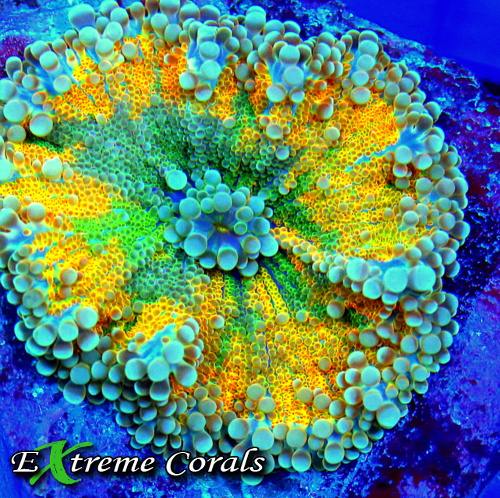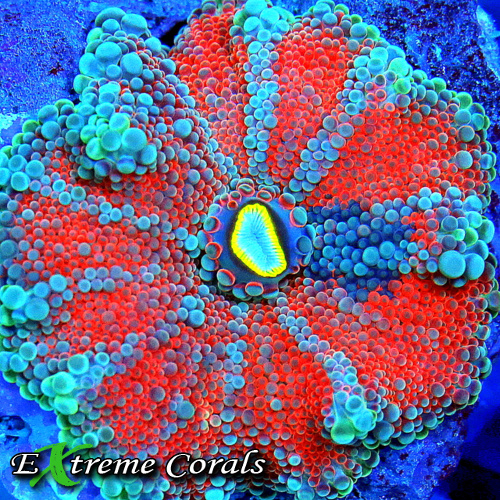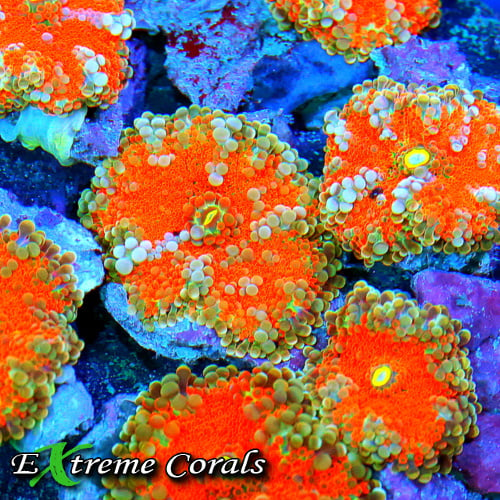Extreme Corals News and Updates
Enhancing Your Aquarium's Biodiversity with Ricordea Corals
Unlock the Beauty and Benefits of Ricordea Corals: A Guide to Care, Biodiversity, and Aquarium Health
Aquarium enthusiasts often strive to create vibrant and diverse underwater ecosystems. One effective way to achieve this is by incorporating Ricordea corals into your aquarium. These colorful and hardy corals not only enhance the visual appeal of your tank but also play a significant role in maintaining a healthy aquatic environment. In this blog, we will explore what Ricordea corals are, how to care for them, and their importance in promoting biodiversity in your aquarium.
by scott Shiles • September 25, 2024
What Are Ricordea Corals?
Ricordea corals, known for their vibrant colors and unique textures, are a type of soft coral belonging to the family Discosomadidae. They are primarily found in the warm waters of the Indo-Pacific region and the Caribbean Sea. These corals possess a fascinating ability to adapt to various lighting conditions, which makes them a popular choice for both novice and experienced aquarists alike. Their floppy, mushroom-like appearance can create a stunning visual impact in any tank.
One of the striking features of Ricordea corals is their ability to reproduce asexually, allowing them to thrive without the need for a mate. This can lead to fascinating displays of growth, as fragments of the coral may detach and develop into new individuals. This reproductive strategy not only encourages diversity but also ensures that Ricordea can spread over the substrate, creating a rich and colorful landscape within your aquarium.
Moreover, Ricordea corals present a variety of species, with distinct morphs exhibiting an array of colors, such as bright greens, blues, and oranges. Each morph can add its own flair to your aquarium, making it not just a display of marine life but also a canvas for expression. Collectors often seek out unique morphs to create visually stunning combinations that tell a story about their aquatic environment.
The Benefits of Adding Ricordea Corals to Your Aquarium
Adding Ricordea corals to your aquarium comes with numerous benefits that go beyond mere aesthetics. Firstly, they create a haven for various marine life, including small fish and invertebrates, which can find shelter among their soft, often wavy tentacles. This habitat contributes to a more balanced ecosystem, allowing your aquarium to thrive. These corals serve as a refuge, ensuring that vulnerable species can escape from predators.
In addition to providing shelter, Ricordea corals can contribute to the stability of your aquarium's water quality. They are known for their symbiotic relationship with zooxanthellae, microscopic algae that reside within their tissues. This partnership is mutually beneficial; the algae produce oxygen and sugars through photosynthesis, which nourishes the coral, while the corals create an environment for the algae to thrive. Consequently, this relationship enhances water clarity and reduces harmful nutrients that could lead to algal blooms.
Moreover, incorporating Ricordea corals can enhance the overall visual diversity of your aquarium. Their bright colors and unique shapes can bring life to your tank while also providing a dynamic backdrop for observing your fish. The pop of color and textures they contribute is not only pleasing to the eye but can also excite and stimulate the behaviors of your aquatic inhabitants, resulting in a more engaging viewing experience.

Ideal Conditions for Growing Ricordea Corals
To successfully grow Ricordea corals, it's essential to replicate their natural habitat as closely as possible. They prefer moderate to low light levels, which contrasts with many other coral species that thrive in bright conditions. Placing them in shaded areas or using low-intensity lighting can help them flourish without experiencing stress. Additionally, it's crucial to monitor the parameters of your aquarium's water, as Ricordea corals thrive best in stable conditions.
Water quality is another key aspect of care. Ricordea corals prefer a pH between 8.1 and 8.4, with a temperature range of 72°F to 78°F. Regular testing and maintenance of these parameters will help ensure that your corals remain healthy and vibrant. Moreover, keeping the salinity between 1.020 and 1.025 is important, as fluctuations can lead to harm or even death for these delicate organisms.
Finally, the aquarium's current and flow dynamics play a significant role in the health of Ricordea corals. They thrive in gentle water movement, which helps remove debris without causing undue stress. Providing a flow rate that allows for some gentle currents will encourage the corals to open up fully and display their captivating beauty while also facilitating optimal nutrient absorption.
How to Care for Ricordea Corals
Caring for Ricordea corals is both rewarding and manageable, especially when you understand their specific needs. One primary aspect is ensuring they receive adequate nutrients. While Ricordea can photosynthesize due to their symbiotic relationship with zooxanthellae, supplemental feeding can promote optimal growth. Offering them finely crushed coral or specialized coral food can aid in this process and help them flourish within your marine ecosystem.
Another crucial part of caring for your Ricordea corals is monitoring for signs of stress or illness. Common indicators include shrinking or discolored tissues, which may signal that the coral is not thriving in its current conditions. If you notice these symptoms, consider adjusting water quality parameters or enhancing light and flow conditions. Regularly maintaining the aquarium and observing your corals will help you catch any potential issues before they become significant problems.
It's also beneficial to consider the placement of your Ricordea corals in the aquarium. As they grow, they may expand and take over space, competing for light and nutrients with other corals and inhabitants. This highlights the need for strategic positioning within the tank to ensure each coral has adequate space and resources to thrive. Planning layouts that accommodate their growth will significantly reduce competition and promote overall aquarium biodiversity.

The Role of Ricordea Corals in Aquarium Biodiversity
Ricordea corals contribute significantly to aquarium biodiversity, adding not only visual appeal but also complex interactions among various marine species. Their presence leads to diverse habitats that can accommodate a range of fish and invertebrates. As these corals flourish, they create vertical structures within the tank that fish can explore, providing them with shelter and breeding grounds. This increased habitat complexity supports a more balanced ecosystem, which encourages species variety.
Moreover, Ricordea corals support a numerous array of microfauna, which thrive within their tissues. These tiny organisms can serve as a food source for larger tank inhabitants, fostering a dynamic and interactive environment. As fish and invertebrates feed on the microfauna, they contribute to the overall health of the ecosystem, creating a self-sustaining habitat that mimics natural ocean environments.
In essence, by introducing Ricordea corals into your aquarium, you're not only enhancing beauty but actively participating in promoting ecological diversity. These corals play an important role in maintaining the balance of the aquatic environment, allowing for the coexistence of various species and providing a thriving habitat that goes beyond the visual allure.
Troubleshooting Common Issues with Ricordea Corals
When caring for Ricordea corals, encountering issues is sometimes an inevitable part of the journey. One common problem aquarists face is poor growth or discoloration, which can arise from inadequate lighting or incorrect water conditions. If your corals are not thriving, consider testing the light intensity and adjusting their position in the aquarium to ensure they receive the appropriate amount of brightness. Similarly, consistently checking water parameters, such as salinity, pH, and temperature, can help identify underlying issues.
Another issue that may arise is the presence of pests, such as flatworms or nudibranchs, which can harm Ricordea corals. Regularly inspecting your tank for these unwanted inhabitants and implementing preventive measures, such as quarantine for new additions, can help minimize their impact. If you discover pests, there are various treatment options available to eliminate them without causing damage to your corals or the overall ecosystem.
Lastly, ensuring proper water flow is vital for the health of Ricordea corals. If you notice signs of stress, such as closed or retracted tentacles, it may indicate that the water movement is too strong or too weak. Monitoring flow conditions and adjusting them to create a gentle current can promote optimal health and encourage your corals to thrive. With careful attention and dedicated care, most issues can be resolved, helping your Ricordea corals flourish in their vibrant underwater home.
Final Thoughts on Ricordea Corals
Incorporating Ricordea corals into your aquarium can greatly enhance its biodiversity and create a thriving environment for your fish and invertebrates. By understanding their care requirements and benefits, you can successfully add these beautiful corals to your underwater world. Whether you're a seasoned aquarist or a beginner, Ricordea corals can provide stunning visual interest while contributing to the health of your aquarium ecosystem.

